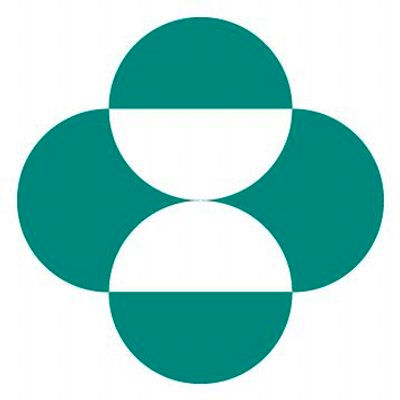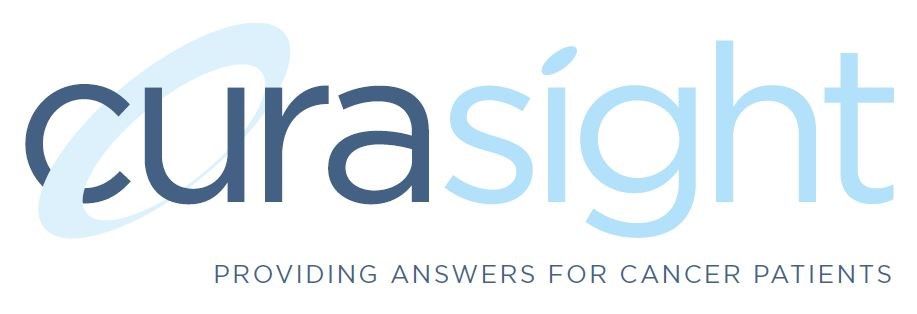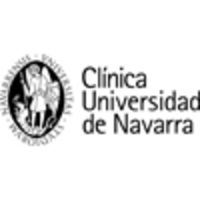预约演示
更新于:2025-05-07
Invasive Carcinoma
浸润性癌
更新于:2025-05-07
基本信息
别名 Invasive Carcinoma |
简介 A carcinoma that is not confined to the epithelium, and has spread to the surrounding stroma. |
关联
3
项与 浸润性癌 相关的药物靶点- |
作用机制 免疫刺激剂 |
在研机构 |
原研机构 |
最高研发阶段临床3期 |
首次获批国家/地区- |
首次获批日期1800-01-20 |
靶点 |
作用机制 uPAR抑制剂 |
在研机构 |
原研机构 |
最高研发阶段临床前 |
首次获批国家/地区- |
首次获批日期1800-01-20 |
25
项与 浸润性癌 相关的临床试验NCT06191133
Window of Opportunity Trial of Fenofibrate in Patients With High-grade Cervical Intraepithelial Neoplasia and Invasive Cervical Carcinoma
Normally, p53 helps prevent tumors from forming in the body. Early studies have shown that Fenofibrate, a cholesterol-lowering drug, can restore normal function to p53 and can change the metabolism of HPV-positive tumors in a way that stops the growth of tumors. The purpose of this study is to understand how Fenofibrate can be used to treat HPV-positive cervical cancers and cervical dysplasia. Researchers will examine collected tissue samples and investigate various genes and proteins to see whether Fenofibrate has an effect on HPV-positive cervical cancers and cervical dysplasia.
开始日期2024-11-20 |
NCT06540872
Multimodal Imaging With FAPI-PET/MRI in Breast Carcinoma-In-Situ for Detection of Occult Invasive Cancer
DCIS (ductal carcinoma in situ) is a common pre-stage for breast cancer. The goal of this clinical trial is to learn if FAPI-PET/MRI (an imaging technique with a weakly radioactive drug) helps to diagnose hidden invasive breast cancer in participants with DCIS. The main question it aims to answer is:
How good can FAPI-PET/MRI diagnose hidden invasive breast cancer in DCIS?
Researchers will compare FAPI-PET/MRI results to tissue samples obtained from surgery treatment to see if the FAPI-PET/MRI images show invasive breast cancer certainly.
Participants will
* receive the radioactive drug and lie in an imaging device for 45 minutes including a break
* visit the clinic once again for a checkup and test
How good can FAPI-PET/MRI diagnose hidden invasive breast cancer in DCIS?
Researchers will compare FAPI-PET/MRI results to tissue samples obtained from surgery treatment to see if the FAPI-PET/MRI images show invasive breast cancer certainly.
Participants will
* receive the radioactive drug and lie in an imaging device for 45 minutes including a break
* visit the clinic once again for a checkup and test
开始日期2024-09-10 |
申办/合作机构 |
NCT06338215
A Non-inferiority Randomized Trial Testing an Advice of Moderate Drinking Pattern Versus Advice on Abstention on Major Disease and Mortality
The goal of this clinical trial is to test two advices on alcohol drinking in more than 10.000 Spanish adult drinkers (men of 50 or more years and women of 55 or more years).
The main question it aims to answer is to test the non-inferiority advice of a moderate alcohol drinking pattern on all-cause mortality and other chronic disease like cardiovascular disease, cancer or type 2 diabetes.
Participants will receive during 4 years an advice to drink alcohol following a Mediterranean Alcohol Drinking Pattern (MADP): consuming alcohol in moderation, avoidance of binge drinking and preference for red wine.
Researchers will compare those who will receive a MADP advice with those who will receive an advice on abstention to see if the advice on MADP is not inferior than the abstention advice to prevent all-cause mortality and other chronic diseases.
The main question it aims to answer is to test the non-inferiority advice of a moderate alcohol drinking pattern on all-cause mortality and other chronic disease like cardiovascular disease, cancer or type 2 diabetes.
Participants will receive during 4 years an advice to drink alcohol following a Mediterranean Alcohol Drinking Pattern (MADP): consuming alcohol in moderation, avoidance of binge drinking and preference for red wine.
Researchers will compare those who will receive a MADP advice with those who will receive an advice on abstention to see if the advice on MADP is not inferior than the abstention advice to prevent all-cause mortality and other chronic diseases.
开始日期2024-05-15 |
100 项与 浸润性癌 相关的临床结果
登录后查看更多信息
100 项与 浸润性癌 相关的转化医学
登录后查看更多信息
0 项与 浸润性癌 相关的专利(医药)
登录后查看更多信息
13,240
项与 浸润性癌 相关的文献(医药)2025-12-01·Molecular Biology Reports
Phyto-mediated fabrication of silver nanoparticles from Scrophularia striata extract (AgNPs-SSE): a potential inducer of apoptosis in breast cancer cells
Article
作者: Abbasi, Maryam ; Javar, Niloufar ; Sadat Shandiz, Seyed Ataollah
2025-08-01·European Journal of Surgical Oncology
Clinical management and oncologic outcomes of pure pleomorphic and florid lobular carcinoma in situ of the breast: Results from a large single institution experience
Article
作者: Milardi, F ; Del Bianco, P ; Tos, A P Dei ; Ferrucci, M ; Cappellesso, R ; Passeri, D ; Marchet, A
2025-07-01·European Journal of Surgical Oncology
Risk of pancreatic cancer and high-grade dysplasia in resected main-duct and mixed-type intraductal papillary mucinous neoplasms: A prevalence meta-analysis
Review
作者: Wolfgang, Christopher L ; Mahmud, Omar ; Fatimi, Asad Saulat ; Sacks, Greg D ; DiMaggio, Charles ; Hewitt, D Brock ; Javed, Ammar A ; Grewal, Mahip
104
项与 浸润性癌 相关的新闻(医药)2025-04-28
Keytruda's Keynote-689 marks the first positive trial in more than two decades in resected locally advanced head and neck squamous cell carcinoma.
Ending a 20-year-plus drought, Merck & Co.’s Keytruda demonstrated that its use around surgery can reduce the risk of certain head and neck cancers from returning.Continuous use of Keytruda—both before and after surgery—reduced the risk of recurrence or death by 27% in patients with stage 3 or 4a, resected, locally advanced head and neck squamous cell carcinoma (HNSCC), according to results from the phase 3 Keynote-689 trial presented at the American Association for Cancer Research Annual Meeting 2025.In the study, Keytruda was added to postoperative radiotherapy with or without chemo. Investigators compared the perioperative Keytruda regimen with the sans-Keytruda standard treatment.Keynote-689 marks the first positive trial in more than two decades in resected locally advanced HNSCC, making Keytruda the first PD-1 inhibitor to mount such a benefit.The study’s findings suggest that the Keyturda regimen represents a new standard of care in this disease setting, Ravindra Uppaluri, M.D., Ph.D., from Brigham and Women’s Hospital and Dana-Farber Cancer Institute, said during a press conference Sunday. Uppaluri is a co-principal investigator of Keynote-689.The 27% event-free survival (EFS) improvement, though statistically significant, isn’t numerically among Keytruda’s best performances in its use around surgery, an approach known as perioperative treatment. In 2023, Keytruda won its perioperative non-small cell lung cancer approval after slashing the risk of disease recurrence, worsening or death by 42% when added to presurgical chemo alone.The 27% number is still clinically meaningful, Marjorie Green, M.D., Merck’s head of oncology global clinical development, said in an interview with Fierce Pharma.At three years, 57.6% of patients in the Keytruda arm remained recurrence free, versus 46.4% in the control arm. That 11.2-percentage-point absolute difference is also clinically meaningful for patients, she added.“There have been uptakes and adoptions of therapies for 2% to 3% absolute difference in outcomes, because we know most of the recurrences that have happened on the study were distant,” which increases the risk of death, she said.Further, Keytruda’s 51.8-month median EFS time was notably longer than the control arm’s 30.4 months. Despite the overall trial win, there remains a question about whether Keytruda is appropriate for patients whose tumors have low to no expression of PD-L1.The magnitude of Keytruda’s EFS benefit deteriorated as patients with lower levels of PD-L1 were included in the analysis. In patients with PD-L1 expression at a combined positive score (CPS) of 10 or above, the EFS risk reduction reached 34%. The number dropped to 30% when those with at least 1 CPS score were included, and then to 27% when PD-L1-negative disease was also counted.Green wouldn’t disclose what level of PD-L1 coverage Merck is seeking in the drug’s FDA label. She did note that Keytruda’s existing perioperative indications in other curative disease settings are broad approvals across the PD-L1 spectrum. In this HNSCC setting, patients with CPS of 10 or greater make up about 65% of the population, and only 5% have CPS below 1. Because of the small number of patients, it would be hard to draw conclusions about the PD-L1-negative group, Uppaluri said during the press conference.“Given that as a whole, I would say yes, this should be for all participants,” Uppaluri said.Another question that Keynote-689 cannot conclusively answer is whether Keytruda is necessary both before and after surgery. That question is even more relevant because Roche’s PD-L1 inhibitor Tecentriq failed in its own study when used as an adjuvant therapy after head and neck cancer surgery.Uppaluri admitted that the contribution of components is clearly a limitation of the study. Before Keynote-689 was launched, some investigator-initiated studies showed the potential of a perioperative regimen. Plus, there’s been a theory that giving a checkpoint inhibitor early before surgery—when the immune system is more robust and the tumors intact—may lead to better outcomes, Green noted.On a key secondary endpoint, Keytruda recorded a 9.4% major pathological response rate—defined as 10% or lower residual invasive cancer cells in resected tissues—versus 0% in the standard-of-care arm.Green acknowledged that 9.4% is a fairly small number. But it could indicate that adjuvant Keytruda provided some contribution to the EFS benefit.Neoadjuvant treatment with Keytruda appeared to have led to fewer uses of chemo in the adjuvant setting because more patients were deemed to have lower risk post-surgery.Green called that element out because removing the need for chemo could mean better tolerability. In Keynote-689, the Keytruda arm recorded numerically fewer chemo-related side effect incidents such as severe skin reactions.Finally, data on whether Keytruda could extend patients’ lives remained immature. Keytruda showed a favorable 28% reduction in the risk of death in the CPS 10 or above population. Because the statistical significance bar was not met, testing of this endpoint in the rest of the study population was not formally performed, and additional follow-up is ongoing. Merck’s application based on Keynote-689 is under FDA priority review with a target decision date of June 23, 2025.

临床结果临床3期优先审批AACR会议
2025-04-15
·医药健闻
中国境内首个且目前唯一、可供适龄男性女性接种的九价HPV疫苗。美通社消息,默沙东(默沙东是美国新泽西州罗威市默克公司的公司商号)宣布,佳达修®9[九价人乳头瘤病毒疫苗(酿酒酵母)](后称“九价HPV疫苗”)多项新适应证已获得国家药品监督管理局的上市批准,适用于16~26岁男性接种。这一获批使佳达修®9成为中国境内首个且目前唯一获批、可适用于适龄男性女性接种的九价HPV疫苗,标志着中国正式进入了“男女共防HPV相关癌症及疾病”的新阶段。佳达修®9覆盖6、11、16、18、31、33、45、52 和 58 型,共九种HPV型别。此次获批的男性适应证可预防HPV16、18引起的肛门癌,HPV6和11引起的生殖器疣(尖锐湿疣),由HPV6、11、16、18引起的以下癌前病变或不典型病变:1级、2级、3级肛门上皮内瘤样病变(AIN)。HPV感染是威胁人类健康的重要公共卫生问题之一。HPV感染较为普遍,世界卫生组织表明,约80%男人和女人一生中会感染至少一种HPV型别。HPV对外界的抵抗力相对较强;性行为是感染HPV的主要途径,但不是唯一途径,HPV的感染还可通过母婴传播以及直接接触传播,如皮肤黏膜接触。大多数HPV感染通常无症状,且大多可通过人体免疫机制自然清除,但少数感染者也有可能进一步发展为持续感染,并最终发展为癌前病变和浸润性癌。世界卫生组织披露,截至2019年,全球约69万新发癌症与HPV感染直接相关。同时,相关研究显示,2007-2015年,中国HPV相关癌症发病数和发病率逐年增加。相关研究显示,HPV6/11/16是中国男性常见的感染型别。某些型别HPV持续感染可引发多种癌症,包括肛门癌,世界卫生组织数据预测,2022年至2050年全球范围内的肛门癌新发病例和死亡病例都将逐年上升。相关数据显示,88%肛门癌归因于HPV持续感染。低危型HPV可致生殖器疣,又称尖锐湿疣,容易复发,且约90%与低危型HPV6和HPV11感染有关。联系美通社+86-10-5953 9500info@prnasia.com
上市批准疫苗
2025-04-14
默沙东九价人乳头瘤病毒疫苗(酿酒酵母)在华获批上市男性适应证佳达修®9成为中国境内首个且目前唯一、可供适龄男性女性接种的九价HPV疫苗中国上海,2025年4月14日——默沙东(默沙东是美国新泽西州罗威市默克公司的公司商号)宣布,佳达修®91[九价人乳头瘤病毒疫苗(酿酒酵母)](后称“九价HPV疫苗”)多项新适应证已获得国家药品监督管理局的上市批准,适用于16~26岁男性接种。这一获批使佳达修®9成为中国境内首个且目前唯一获批、可适用于适龄男性女性接种的九价HPV疫苗,标志着中国正式进入了“男女共防HPV相关癌症及疾病”的新阶段。佳达修®9覆盖6、11、16、18、31、33、45、52 和 58 型,共九种HPV型别1。此次获批的男性适应证可预防HPV16、18引起的肛门癌,HPV6和11引起的生殖器疣(尖锐湿疣),由HPV6、11、16、18引起的以下癌前病变或不典型病变:1级、2级、3级肛门上皮内瘤样病变(AIN)。田安娜默沙东全球高级副总裁、默沙东中国总裁“我们非常开心再迎来九价HPV疫苗男性适应证的获批;自2018年九价HPV疫苗在中国境内获批首个适应证以来,我们一直致力于为中国大众提供更多健康防护措施,并陆续迎来9-45岁扩龄、9-14岁二剂次接种方案以及本次男性适应证的获批。这无疑体现出了政府在加速消除宫颈癌、扩大疫苗可及性以及为广大中国大众提供多元化健康选择等各方面的持续加码与不懈努力。HPV疫苗是目前全球唯一能够有效预防癌症的疫苗。截至2024年底,全球佳达修®9累计接种数量已超3亿剂次;在中国,佳达修®9也已为超3,300万的适龄女性提供了保护。但其实HPV感染不分性别,我们深知推行男女共防HPV事业的紧迫性,希望通过全新适应证的获批,能够在保护广大女性的同时,惠及更多男性,造福家庭、社区乃至全社会,致力于携手共筑一个没有HPV相关疾病的未来。”HPV感染是威胁人类健康的重要公共卫生问题之一2。HPV感染较为普遍3,世界卫生组织表明,约80%男人和女人一生中会感染至少一种HPV型别4。HPV对外界的抵抗力相对较强5;性行为是感染HPV的主要途径,但不是唯一途径,HPV的感染还可通过母婴传播以及直接接触传播,如皮肤黏膜接触5。大多数HPV感染通常无症状4,且大多可通过人体免疫机制自然清除,但少数感染者也有可能进一步发展为持续感染,并最终发展为癌前病变和浸润性癌5。世界卫生组织披露,截至2019年,全球约69万新发癌症与HPV感染直接相关6,7。同时,相关研究显示,2007-2015年 ,中国HPV相关癌症发病数和发病率逐年增加8。相关研究显示,HPV6/11/16是中国男性常见的感染型别9。某些型别HPV持续感染可引发多种癌症,包括肛门癌3,5,世界卫生组织数据预测,2022年至2050年全球范围内的肛门癌新发病例和死亡病例都将逐年上升10。相关数据显示,88%肛门癌归因于HPV持续感染11。低危型HPV可致生殖器疣5,又称尖锐湿疣,容易复发,且约90%与低危型HPV6和HPV11感染有关12。乔友林北京协和医学院群医学与公共卫生学院特聘教授、研究员“HPV疫苗接种是预防HPV相关疾病及癌症的有效方法之一,是防控HPV感染相关疾病的一级预防措施之一13。预防HPV感染不仅能够降低癌症负担,还能够减轻公共卫生和医疗系统压力。 HPV感染不分性别,男性感染后自然清除率低于女性14,男性也可能因HPV持续感染发展为肛门癌及生殖器疣等疾病15。男女共同接种HPV疫苗一方面有助于实现群体免疫,另一方面能够预防男性HPV相关疾病16,还能进一步响应WHO《加速消除宫颈癌全球战略》的号召,加速实现“90-70-90”的阶段性目标7,助力最终实现消除HPV相关癌症及疾病的全球目标17。”李正卿 博士默沙东全球高级副总裁默沙东中国研发中心总裁“九价HPV疫苗男性适应证的获批上市是基于默沙东临床试验和长期随访研究的科学数据,是默沙东响应健康中国2030的又一重要里程碑。新适应证的获批不仅为广大适龄男性人群预防HPV相关疾病提供多元选择,也为加速中国消除HPV相关癌症及疾病迈出了坚实的一步。作为全球首家推出九价HPV疫苗的公司,默沙东将继续投入研发,不断发掘HPV疫苗在不同人群中预防相关疾病的潜力。截至目前,佳达修®9是目前唯一在男性人群获得临床研究数据,且历经10年海外真实世界接种检验的九价HPV疫苗。默沙东目前在国内正在开展多项HPV疫苗的临床研究,希望获得更多中国研究成果,惠及更多有需要的人群。”参考文献:[1] 此前,佳达修®9在境内所获批适应证适用于9~45岁女性的预防接种,本品适用于预防由本品所含的HPV型别引起的下列疾病:HPV16型、18型、31型、33型、45型、52型、58型引起的宫颈癌。以及由HPV6型、11型、16型、18型、31型、33型、45型、52型、58型引起的下列癌前病变或不典型病变:宫颈上皮内瘤样病变(CIN)2/3级,以及宫颈原位腺癌(AIS)。宫颈上皮内瘤样病变(CIN)1级。以及HPV6型、11型、16型、18型、31型、33型、45型、52型、58型引起的持续感染。[2] 朱孔鑫,等. HPV疫苗有效性的真实世界研究.中华微生物学和免疫学杂志, 2023, 43(3) 230-238.[3] HPV and Cancer - NCI[4] WHO-Questions and Answers about HPV[5] 子宫颈癌等人乳头瘤病毒相关疾病免疫预防专家共识. 中华预防医学杂志. 2019;53(8)761-803[6] Global burden of cancer attributable to infections: the critical role of implementation science,The Lancet Global Health, Volume 8, Issue 2, February 2020, Pages e153-e154[7] WHO - Human papillomavirus and cancer[8] Duan R, et al. Cancer Epidemiol Biomarkers Prev. 2022 ;31(5):1130-1136.[9] Liu Y, et al. J Infect Public Health. 2023,16(7):989-995. [10] IACR Cancer Tomorrow, 2024[11] 元玫雯, 等. 中华流行病学杂志. 2022, 43(5): 702-708.[12] 中华医学会皮肤性病学分会等.中国皮肤性病学杂志.2021;35(4)359-374[13] 中华医学会妇科肿瘤学分会,中国优生科学协会阴道镜和宫颈病理学分会,马丁,等. 人乳头瘤病毒疫苗临床应用,中国专家共识[J]. 协和医学杂志,2021,12(2):189-201.[14] Malagón T et al. Epidemiology. 2021;32(3)368–377.[15] Irene Man, Damien Georges, Rengaswamy Sankaranarayanan, Partha Basu, Iacopo Baussano. Building resilient cervical cancer prevention through gender-neutral HPV vaccination. eLife. 2023;12. doi:10.7554/eLife.85735[16] Williamson AL. Viruses. 2023 Jun 26;15(7) 1440.[17] 艾滋病毒、病毒性肝炎和性传播感染2022-2030年全球卫生部门战略若您想了解更多有关疾病知识的信息,请咨询医疗卫生专业人士04-2025-CN-GSL-02661关于默沙东在默沙东(默沙东是美国新泽西州罗威市默克公司的公司商号),我们齐心协力追求共同的目标:我们发挥前沿科学的力量,在全球范围内拯救生命、改善生活。130多年来,我们通过研发重要药物和疫苗,为全人类带来希望。我们致力成为顶尖的研究密集型生物制药公司——当下,我们正处于研发前线,推出创新解决方案,以推进人类和动物疾病的预防和治疗。我们建立了一个多元、包容的全球员工体系,以负责的态度经营每一天,确保所有人、所有社区都能有一个安全、可持续和健康的未来。更多信息,请访问www.msd.com,并在X(前身为Twitter)、LinkedIn和Youtube平台关注我们。关于默沙东中国中国是默沙东全球增长战略中至关重要的一部分。默沙东中国总部设在上海,同时在北京设有研发中心、分别在杭州、宁波和天津设有工厂,实现了研发、制造和商业运营三擎合一。我们全心全意,向中国大众提供高质量的创新药品、疫苗和服务,造福中国社会。更多信息,敬请访问默沙东中国官网,或关注默沙东中国在微信上的官方社交媒体账号。默沙东前瞻性声明默沙东是美国新泽西州罗威市默克公司的公司商号(下称“公司”)。本新闻稿包含根据《1995 年美国私人证券诉讼改革法案》之安全条款而做出的“前瞻性声明”。本文内容基于公司管理层当前的看法和预期,并且受制于可能出现的重大风险和不确定因素。默沙东不保证在研产品能获得所需的监管部门批准或取得商业成功。如果相关假设与现实有所出入、出现风险,或发生不确定情况,实际结果可与前瞻性声明中的预期有实质上的差异。风险和不确定因素包括但不仅限于一般行业情况与竞争、一般经济因素(包括利率与汇率浮动)、美国及其他国家制药行业监管以及医疗政策的影响、全球范围内控制医疗成本的趋势、技术发展、竞争对手获得的新产品与专利、新产品开发固有的挑战(包括获得监管部门批准)、默沙东对未来市场形势做出准确预测的能力、生产上的困难或迟延、国际经济金融状况不稳定与主权风险、对默沙东专利和其它创新产品保护的有效性的依赖程度,以及公司面临专利诉讼和/或监管行动的风险。默沙东没有义务就新信息、未来事件或其它原因对任何前瞻性声明进行公开的更新。尚有其它因素可能导致实际结果与前瞻性声明存在实质性差异,请参见默沙东2024年年报10-K报表以及公司在美国证券交易所备案的其它文件(可在美国证券交易所网站www.sec.gov上查阅)。
上市批准疫苗
分析
对领域进行一次全面的分析。
登录
或

生物医药百科问答
全新生物医药AI Agent 覆盖科研全链路,让突破性发现快人一步
立即开始免费试用!
智慧芽新药情报库是智慧芽专为生命科学人士构建的基于AI的创新药情报平台,助您全方位提升您的研发与决策效率。
立即开始数据试用!
智慧芽新药库数据也通过智慧芽数据服务平台,以API或者数据包形式对外开放,助您更加充分利用智慧芽新药情报信息。
生物序列数据库
生物药研发创新
免费使用
化学结构数据库
小分子化药研发创新
免费使用





